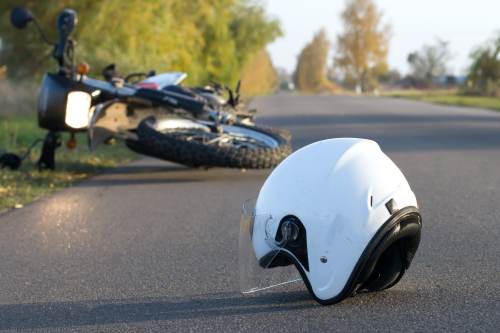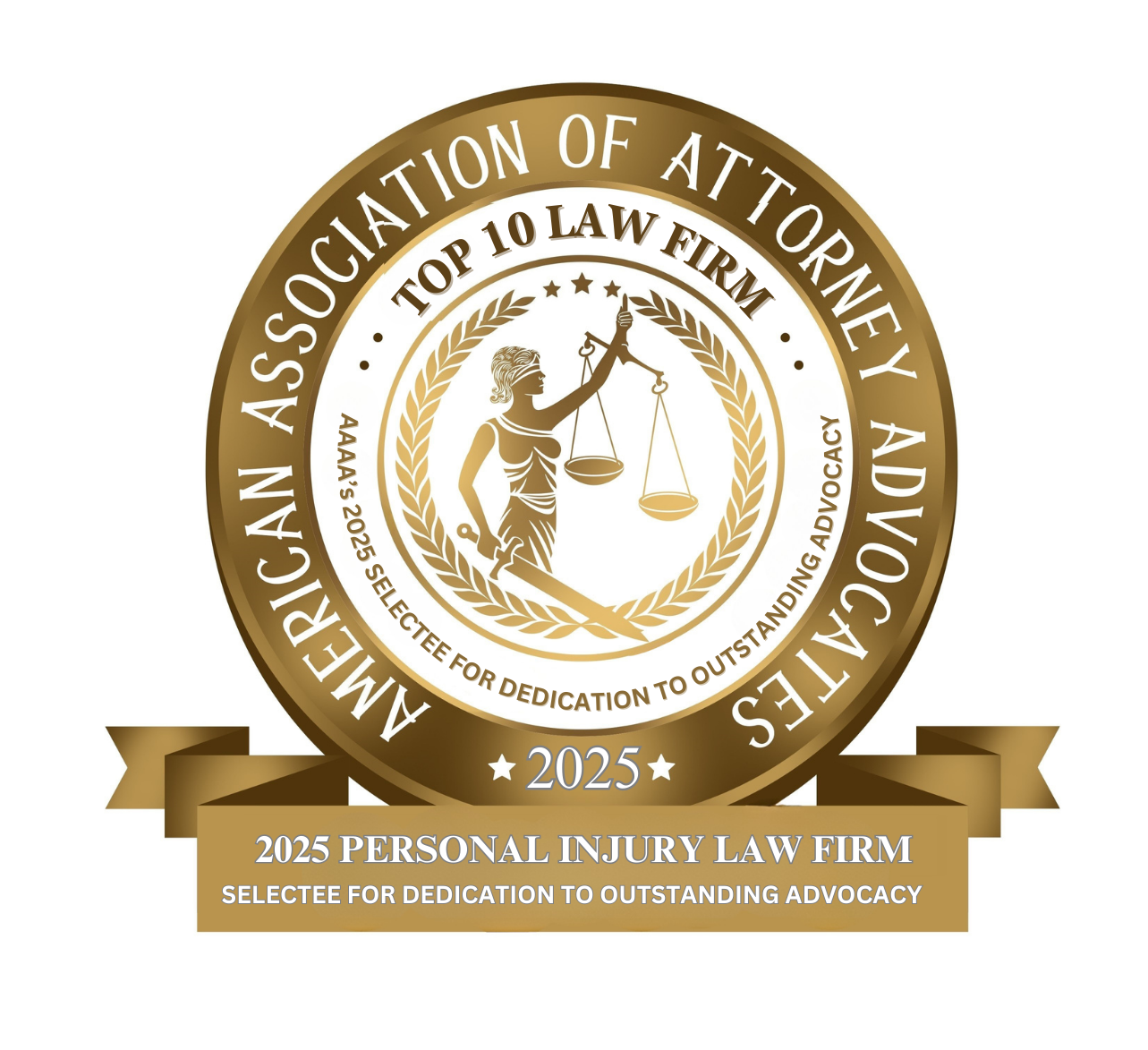- Free Consultation: (630) 527-4177 Tap Here to Call Us
How Weather Conditions Impact Motorcycle Accident Risk

Motorcycling offers a unique sense of freedom, but it also comes with serious risks, especially when the weather turns bad. While experienced riders know that inclement weather demands caution, even the most skilled motorcyclists are vulnerable when road conditions deteriorate. Understanding how rain, snow, wind, fog, and temperature extremes impact motorcycle safety is essential for both riders and drivers sharing the road.
This blog explores the relationship between weather and motorcycle accidents, supported by current statistics and research. We also discuss legal implications for motorcyclists injured in weather-related crashes and what steps riders can take to minimize risk.
The Unique Risks Motorcyclists Face in Bad Weather
Unlike enclosed vehicles, motorcycles offer no physical protection from the elements. Riders rely heavily on road traction, visibility, and balance, factors that are quickly compromised in adverse weather conditions. Unlike cars, motorcycles are more likely to hydroplane on wet pavement, be affected by wind gusts, or lose control on icy roads. Poor weather also decreases the visibility of motorcyclists to other drivers, increasing the likelihood of crashes.
Statistics on Motorcycle Accidents and Weather
While weather is not the primary factor in most motorcycle crashes, it remains a significant contributor. Here’s what the data says:
- According to the National Highway Traffic Safety Administration, only about 2% of motorcycle crashes occur during snow or icy conditions, because most riders avoid such weather.
- However, the IIHS reports that rain contributes to nearly 10% of all motorcycle crashes, primarily due to reduced traction and visibility.
- The fatal crash rate is highest in the summer months, likely due to increased riding, but injury severity increases in poor weather conditions regardless of season.
Even if the absolute number of crashes is lower in inclement weather due to fewer riders on the road, the likelihood of serious injury or death is higher when those accidents do occur.
Rain: The Most Common Hazardous Weather for Riders
Wet Roads Increase Skidding and Hydroplaning
Rain is the most frequent type of inclement weather affecting motorcyclists. Wet pavement reduces tire grip, increasing stopping distances and making turns more dangerous. The first 30 minutes of a light rain are particularly hazardous due to the mixture of oil and water on the road surface.
According to the Federal Highway Administration (FHWA), wet pavement is a factor in 70% of weather-related crashes across all vehicle types, and rain is involved in 46% of these crashes. While these stats aren’t motorcycle-specific, the impact is likely more severe for two-wheeled vehicles given their lower stability and smaller contact patch with the road.
Visibility Impairments
Rain also impairs visibility for both riders and other drivers. Helmets with face shields can fog up, and rain droplets on the visor or goggles can obscure vision. Drivers may not see motorcyclists in time to avoid collisions.
Snow and Ice: A Dangerous Mix for Motorcycles
Traction Loss and Inability to Brake or Turn Safely
Motorcyclists typically avoid riding in snow or icy conditions, but sometimes unexpected flurries or a cold snap can catch riders off guard. Snow and black ice eliminate the friction required to keep two wheels stable.
The National Highway Traffic Safety Administration (NHTSA) notes that motorcycle fatality rates per vehicle mile traveled are nearly 24 times higher than those for passenger vehicles. In freezing conditions, this already elevated risk can skyrocket.
Cold Weather Impacts on Performance
Cold air can also reduce tire pressure and harden rubber compounds, leading to less grip. Mechanical components, such as brake fluid and suspension parts, can also be affected by freezing temperatures, reducing their responsiveness.
Fog and Low Visibility Conditions
Reduced Line of Sight and Reaction Time
Fog severely impairs visibility, making it harder for riders to spot road hazards or judge distances. In heavy fog, taillights of other vehicles may not be visible until it’s too late to stop.
According to the FHWA, fog is responsible for an average of 31,385 crashes, 511 deaths, and 11,812 injuries annually in the U.S. Again, motorcyclists are disproportionately affected because they are harder to see and more vulnerable in crashes.
Wind: An Underestimated Danger
High Winds Can Push Riders Off Course

Strong crosswinds or sudden gusts can destabilize a motorcycle, especially at higher speeds. Lightweight bikes and those with large side fairings are particularly susceptible to wind displacement.
The Motorcycle Safety Foundation warns that wind can “sail” a motorcycle out of its lane, particularly when riding near large trucks or on open highways. Riders may need to lean into the wind or reduce speed, which can still be insufficient during wind storms or while passing semi-trailers.
Temperature Extremes and Rider Fatigue
Heat: Dehydration and Heatstroke
Riding in high temperatures can lead to fatigue, dehydration, and even heatstroke. Riders dressed in full protective gear may overheat quickly, impairing judgment and reaction time.
Cold: Hypothermia and Loss of Dexterity
Cold weather poses the opposite risk—reduced dexterity due to numb fingers and slower reaction times. Frostbite and hypothermia are real concerns, especially on long-distance trips.
Rider fatigue and physical discomfort can cause lapses in focus and slower decision-making, increasing accident risk.
Legal Implications of Weather-Related Motorcycle Crashes
Can You Still File a Claim?
Yes. Poor weather does not absolve negligent drivers from liability. If another driver failed to adjust their behavior to suit road conditions—such as by speeding on a wet road—they may be held responsible for the crash, even if weather was a factor.
In Illinois, for example, comparative negligence applies. This means an injured rider can recover damages even if partially at fault, as long as they are less than 50% responsible (735 ILCS 5/2-1116).
How Weather May Affect an Insurance Claim
Insurance adjusters may try to use bad weather to limit or deny coverage, claiming that it was an “act of God” or that the rider knowingly took on risk by riding in bad conditions. Having an experienced Illinois motorcycle accident attorney can help counter these arguments, especially if another driver’s negligence played a role.
Tips for Riding Safely in Bad Weather
While the safest choice is often to avoid riding in poor weather altogether, here are tips for reducing risk if you must ride:
Before You Ride:
- Check tire tread depth and pressure
- Inspect brakes and lights
- Wear weather-appropriate protective gear, including waterproof gloves and boots
On the Road:
- Reduce speed and increase following distance
- Avoid sudden movements or sharp turns
- Use both brakes gradually and evenly
- Stay in the tracks left by cars ahead, where water and snow are less concentrated
- Be especially cautious at intersections, overpasses, and bridges, which freeze first
Visibility Tips:
- Use anti-fog sprays on visors or goggles
- Wear bright or reflective gear
- Keep your headlight on, even during the day
Get Help from the Experienced Motorcycle Accident Lawyers at John J. Malm & Associates
At John J. Malm & Associates, we understand the unique dangers motorcyclists face, especially in Illinois weather. If you’ve been injured in a crash caused by bad weather and someone else’s negligence, don’t wait. Our team is here to protect your rights, deal with the insurance company, and fight for the compensation you deserve.
Call us today at (630) 527-4177 or fill out our online contact form for a free consultation. Let us help you get the compensation you deserve.















